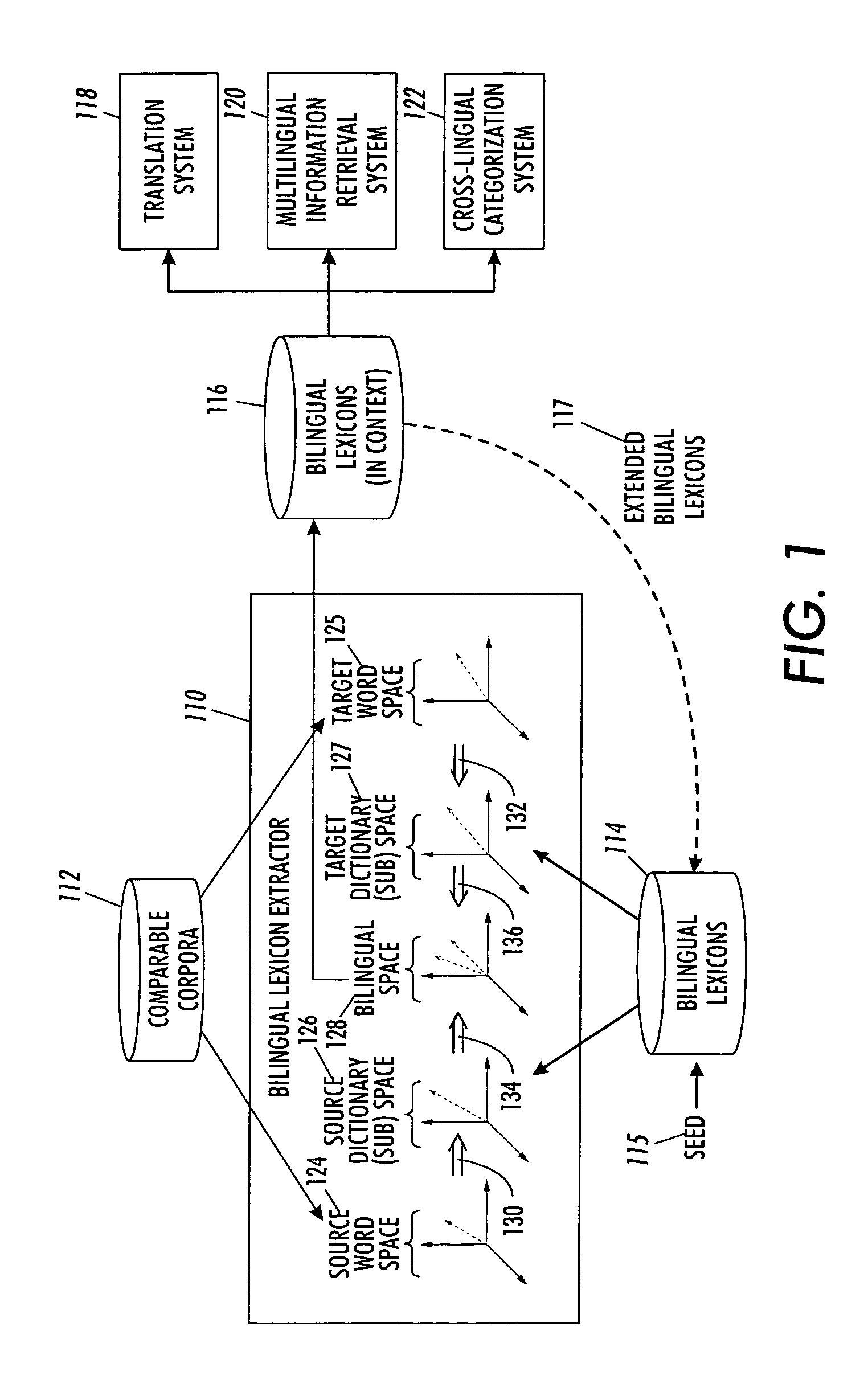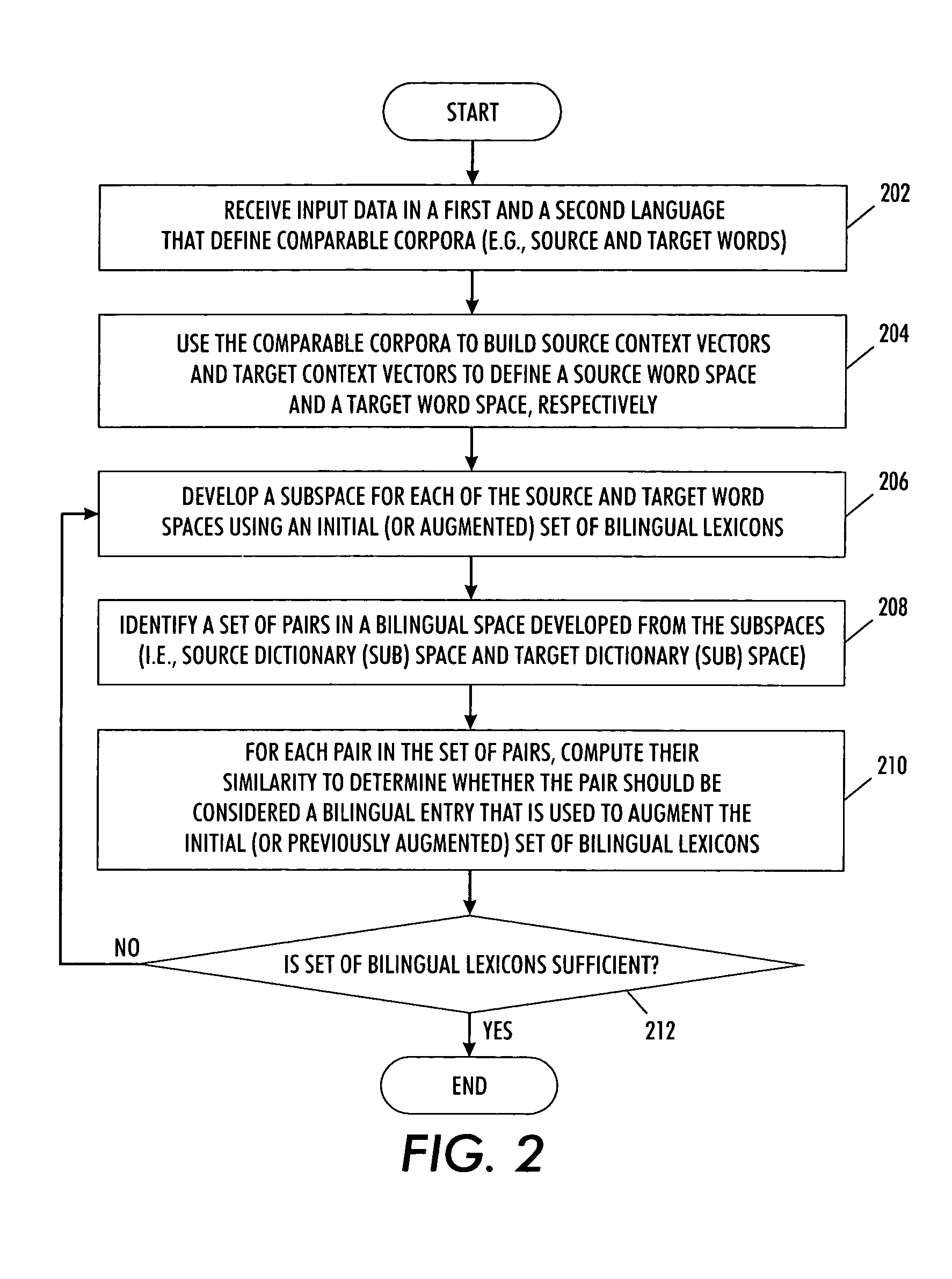Methods and apparatuses for identifying bilingual lexicons in comparable corpora using geometric processing
a technology of geometric processing and lexicons, applied in the field of methods and apparatuses for identifying bilingual lexicons in comparable corpora using geometric processing, can solve the problems of “coverage” and “polysemy/synonymy” that the method described in the blefcc references does not contend well with the polysemy/synonymy problem, and achieve the effect of optimizing the use of existing bilingual dictionaries
- Summary
- Abstract
- Description
- Claims
- Application Information
AI Technical Summary
Benefits of technology
Problems solved by technology
Method used
Image
Examples
Embodiment Construction
[0026]A. Definitions
[0027]The following terms have the indicated meanings throughout this application, including the claims:
[0028]A “word” or “term” is used herein to mean any combination of natural language symbols that may, for example, specify a term, word, phrase, or sentence, or any combination or portion thereof.
[0029]A “lexicon” is used herein to mean a data structure, program, object, or device that indicates words that may occur in a natural language set. A lexicon may be said to “accept” a word it indicates, and those words may thus be called “acceptable” or may be referred to as “in” or “occurring in” the lexicon. In one embodiment, a lexicon is represented using finite state automata.
[0030]A “bilingual lexicon” is used herein to mean a lexicon that indicates a translation of words: from words in a first natural language to words in a second natural language. In one embodiment, a bilingual lexicon is represented using two-tape finite state automata, where a first language...
PUM
 Login to View More
Login to View More Abstract
Description
Claims
Application Information
 Login to View More
Login to View More - R&D
- Intellectual Property
- Life Sciences
- Materials
- Tech Scout
- Unparalleled Data Quality
- Higher Quality Content
- 60% Fewer Hallucinations
Browse by: Latest US Patents, China's latest patents, Technical Efficacy Thesaurus, Application Domain, Technology Topic, Popular Technical Reports.
© 2025 PatSnap. All rights reserved.Legal|Privacy policy|Modern Slavery Act Transparency Statement|Sitemap|About US| Contact US: help@patsnap.com



